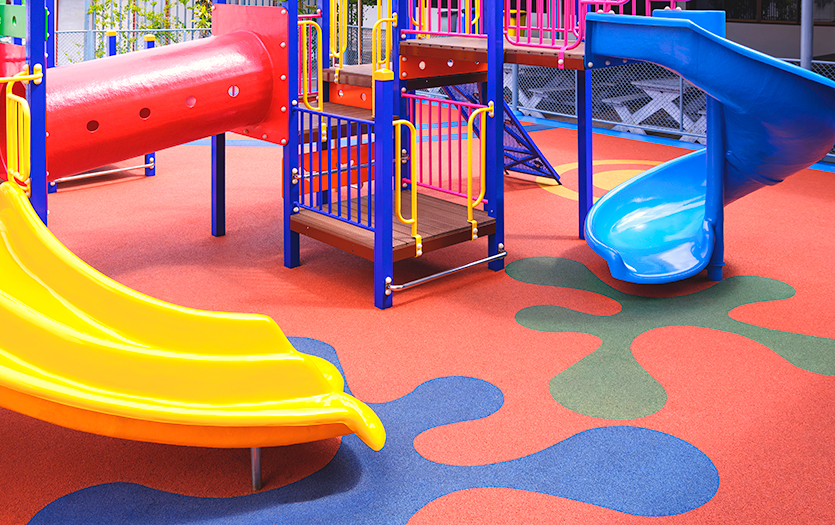
Playgrounds are fun places, but they also present potential hazards that can cause harm if parents don’t take the proper precautions. According to the United States Consumer Product Safety Commission, more than 200,000 children visit emergency rooms each year with injuries associated with playground equipment. While you can't protect your child from every danger they may encounter outside the home, you can take steps to avoid potential trauma and teach them basic safety rules.
Safe equipment
Find playgrounds with secure equipment, including sturdy slides, well-maintained swings and strong climbing structures. Here are some other important safety features to look for:
- Ensure a soft surface, such as sand, wood chips or rubber matting, is under play equipment.
- Check the surface temperature of play equipment if it's warm outside.
- Use wooden equipment with a smooth surface made from all-weather wood. Inspect surfaces now and then to ensure there are no splinters.
- Check equipment for loose joints, open chains, exposed bolts, sharp edges and rust. If the equipment is in a public park, report any problems to the park's staff.
- Use swings that are made from soft and flexible material.
Age-appropriate activities
Playgrounds in public spaces are designed for children of all ages and physical abilities, but not all equipment is suitable for all ages. Consider these guidelines:
- Closely supervise children younger than age 5. Have them play on the equipment separately from older children.
- Don't let a child younger than 4 use climbing equipment taller than they are unless you are always watching them.
- Wait until children are at least 3 years old before using a teeter-totter (seesaw). Young children may not have the necessary coordination to use them safely. Partners should be close in age and of similar weight.
- Have children sit in a bucket swing with leg holes until they can safely sit in the middle of a standard swing.
Playing safely
Children may not always realize when they are engaging in unsafe play, making your direction vital. Teach them some basic rules, like:
- Only allow one child to be seated on the swing at a time and ensure they use both hands to hold onto the chains or rope for stability. Help your child learn to avoid swings while others use them.
- To use slides, children should go single-file up steps. They should also avoid climbing up the slide's surface. Have your child exit the slide's landing quickly so other children coming down the slide don't fall on them.
- It's best to keep your child off trampolines. Trampolines aren't safe for children due to the high risk of falls and collisions; even with constant adult supervision and protective netting, many children are injured.
- Make sure your child is dressed in comfortable, breathable clothing and closed-toe shoes. Avoid items that could get caught in playground equipment, such as necklaces, hooded sweatshirts or helmets.
Final thoughts
Close supervision and awareness of playground safety measures are key to preventing accidents. By doing so, you can ensure that playtime remains fun and safe!
Convenient virtual care options for children with minor injuries
Parkview Health's pediatric patients have access to care from the experts at Cincinnati Children's Hospital Medical Center through the CincyKids Health Connect virtual care app. When you need to see a pediatric expert right away, CincyKids Health Connect is here for you—with 24/7 virtual urgent care from your smartphone or computer. (Please note that lab and imaging services are currently unavailable.)
With the Virtual Walk-in Clinic, you can see a Parkview provider from your smartphone, tablet or computer and receive the same level of care as an in-person visit at a walk-in clinic. Our providers are available to treat and diagnose non-emergency medical issues, and if necessary, prescriptions are sent right to your pharmacy of choice. Virtual Walk-in Clinic video visits are available nationwide 24/7, including holidays and weekends, even if you don't currently have a Parkview provider.
To get started, log in to your MyChart account and select Virtual Walk-In Clinic from the menu. For the best visit experience, use the free MyChart mobile app, downloadable for Android or Apple devices.
In the event of a medical emergency, call 911 or find the emergency room nearest to you.
Copyrighted material adapted with permission from Healthwise, Incorporated. This information does not replace the advice of a doctor.



